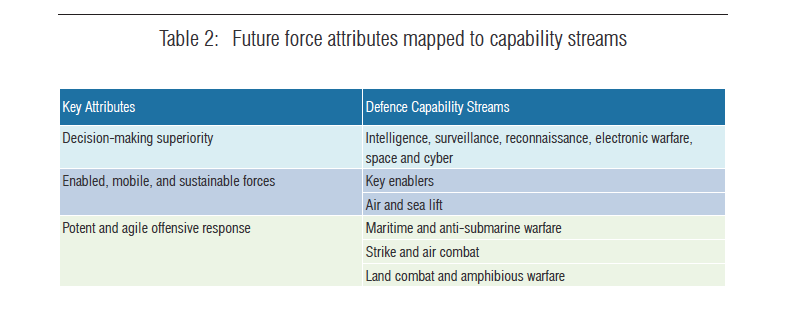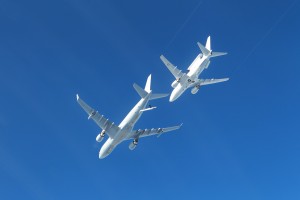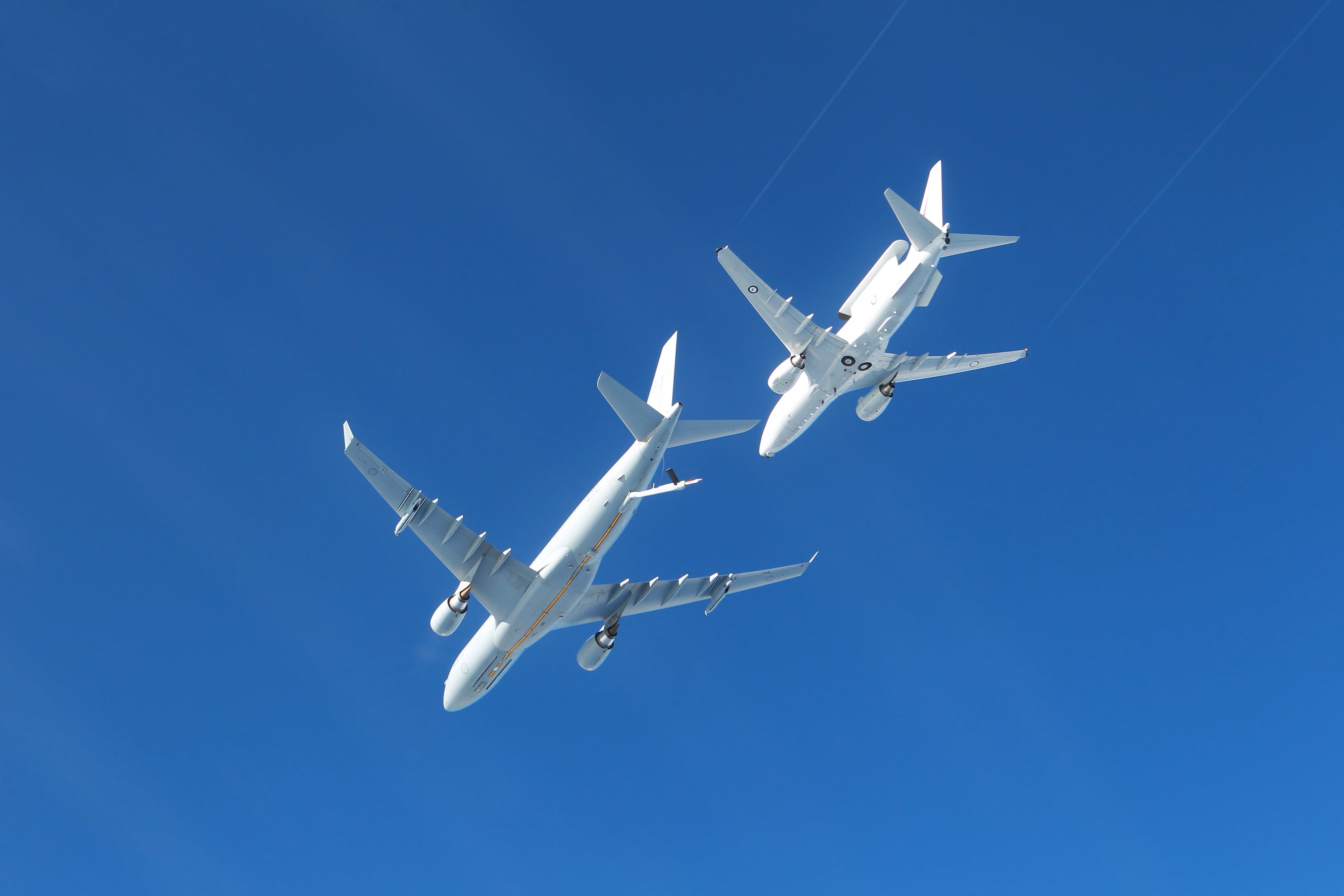2016-02-28 By Robbin Laird
The need to operate at greater distance and to deal with a growing diversity of threats has highlighted the importance of ensuring an ongoing modernization effort to enhance that the industrial democracies have the capabilities to fight as a an integrated team in that battlespace.
This requires capable platforms, which can perform their core missions but to do so with greater effect by being more capable through the connectors or enablers for a more integrated force.
The recent Australian Defence White Paper and associated materials provide a useful look at how to do this.
The analysis recognizes the importance of key platforms, such as how the Royal Australian Air Force has been rebuilt with a number of core assets, such as Wedgetail, the KC-30A and the coming of the F-35.
Each of these platforms has a set of core functions, yet their impact is enhanced by inter-connectivity and determining how best to operate those platforms in ways which enhance the overall capabilities of the force.
Building on existing capabilities, the ADF of the future will feature decision-making superiority, and enabled, mobile and sustainable forces with potent and agile offensive response capabilities
The breadth, complexity and interrelated nature of all Defence capabilities and enablers led to the development, in the Force Structure Review, of a new framework to adequately explain the link between strategy and capability.
The six capability streams in the framework are used in the Integrated Investment Program to better represent the key force elements – how they are typically employed and their planned enhancements.
This was a deliberate move away from describing our capability investment plans in a stovepiped structure.
These six capability streams also support building a clearer picture of the link between capabilities, systems and their supporting enablers in creating key Defence outputs: Intelligence, surveillance, reconnaissance, electronic warfare, space and cyber
Key enablers:
- Air and sea lift
- Maritime and anti-submarine warfare
- Strike and air combat
- Land combat and amphibious warfare.
The relationship between the key attributes of the future force and planned enhancements across the six capability streams is outlined in the Table below (page 13, Defence Integrated Investment Program).

To get to where the ADF wishes to go with regard with an integrated force, key decision making superiority is a crucial capability delivered throughout the integrated battlespace.
In other words, all attributes are not equal.
To do so means appropriate information needs to be generated and delivered to the appropriate decision maker at the point of need.
It is about effective C2 in the battlespace operating at the various points of attack or defense;
It is about generating and distributing information appropriate to those decisions;
It is about information parsimony not simply doing an NSA approach to collecting as much as one can;
It is about focusing on where the decision makers are in the battlespace, allowing them to make decisions at key points of attack or defense and to shape a realistic and effective secure information approach within that battlespace.
Clearly, cyber needs to be built in as well as learning how to fight cyber war within the integrated battlespace.
To ensure our forces can operate effectively and safely in our region and globally, they need a comprehensive picture of what is happening around them.
They also need to be able to operate effectively in a contested electronic environment.This requires analysis, fusion and dissemination of information to support decision makers at all levels (page 14, Defence Integrated Investment Program).
And the Defence White Paper highlighted the kind of force which Australia needs to build as well:
To ensure our forces can operate effectively and safely in our region and globally, they need a comprehensive picture of what is happening around them.
They also need to be able to operate effectively in a contested electronic environment.This requires analysis, fusion and dissemination of information to support decision makers at all levels (Defence Integrated Investment Program, p. 14).
This analysis then is really about the interaction among platforms, enablers, C2 modernization, and secure information tools to deliver the effects appropriate to the mission.
It is not that platforms are not important; they are; but they now must be placed in the context of their contribution to the effects desired by the integrated force.
In making future platform selections, a key decision point is how they contribute to the ultimate desired effect, and how they contribute to decision making superiority and enhanced information security and dominance.
In other words, the shift from a platform centric world is not about platforms not mattering; they do; but what is crucial is now evaluating how a new platform contributes in a multi-mission, or multi-tasking and specialized effect for the evolving force.
There will be more emphasis placed on the joint force – bringing together different land, air, sea, intelligence, electronic warfare, cyber and space capabilities so the ADF can apply more force more rapidly and more effectively when called on to do so.
A new permanent future force design function in Defence will strengthen Defence’s capacity to deliver joint and integrated capabilities.
As well as investing in high-end warfighting equipment, the Government will increase investment in the vital enabling capabilities that bind military capabilities together to maximise Defence’s operational effectiveness.
Key enablers include ADF bases, logistics systems (including fuel and explosive ordnance facilities), upgraded training and testing facilities, health services and information, communications and technology equipment.
The Government will recognise the fundamental input to defence capability provided by Australian defence industry to ensure it delivers the support Defence needs (page 84, Defence White Paper).
For this to work, the purchase of platforms requires a new working relationship between industry and government as well as the services working more effectively to shape how their particular new platform contributes to both the service’s core missions as well as the effects desired for the extended battlespace.
For example, the Wedgetail clearly provides for air battle management, and will change as the F-35 is added to the fleet, and air dominance is the core mission, but how best to provide for the decision making superiority through other parts of the force structure, and to ensure the kind of combat effects the integrate force could deliver?
This requires shaping information sharing approaches that make sense in the contested and permissive battlespace, and shape information parsiomony to deliver information to the decision maker at the point of attack or defense in the air, on the sea or on the ground.
Another example is how the Aussies might address Tanker 2.0.

They have already acquired the advanced A330MRTT and are using it in the battlespace and bringing the tanker to the point where it can support the entire fleet.
The Aussies have already modified their concepts of operations of how to use the tanker, having shifted the tanker from the classic tanker track approach, to one where the crew is connected to the battlespace and determines how best to support the air fleet.
And in shaping the way ahead for what might be called Tanker 2.0 the question is how to get full value out of the operational capabilities of the tanker.
Lifters and tankers are not simply functioning as transportation and fuel off loaders, but are operating in the battlespace and their role can expand as the concept of operations is shifted via additions of appropriate technology to allow them to shape greater capability within the integrated battlespace.
As Air Commodore Lennon put it in an interview last year:
There is a lot of real estate inside and outside of the KC-30A.
How we use that real estate needs to be determined by evolving concept of operations, not simply applying a technology solution set offered by a prime contractor.
From a support perspective, software-enabled systems of the sort prevalent in today’s C2 and ISR systems, are almost throw away systems within five years.
We need to build in cost effective systems, which do not go on forever and are not expected to be repaired beyond a certain period but simply replaced by new, better and cost effective technologies.

Rethinking the Role of Air Mobility in the Transformation of Jointness.
Graphic credited to Second Line of Defense
Here the basic shift is one where Air Mobility Group functions largely as a garage storing tanking and lift assets which transport and fuel assets to its engagement in a much broader role in the battlespace and with it its ability to engage with and support ground, air and naval forces.
Thus, when one approaches the acquisition of new platforms, a key consideration needs to be what does a new platform bring to the battlespace?
How can its organic capabilities enhance the capability of the force to provide for an integrated effect?
How can the platform contribute to the multiplier effect of its operation within the battlespace?
How can the force best survive and prevail and how do new platforms contribute to that effort?
How upgradeable is the platform with regard to the other key capabilities operating in the battlespace?
How can the central role of software upgradeability best be recognized and supported in building out an information secure, decision dominant force?
How to measure cost effectiveness in an integrated battlespace world?
How do new approaches to sustainability built into 21st century systems get recognized as cutting edge ways to have a more effective and sustainable force, rather than being audited to death by 20th century practices and thinking?
The most expensive acquisition could well be one that is the cheapest up front in terms of initial price tag, but is not an effective member of an integrated battlespace.
Such platforms might only contribute to a narrow function without any real capability to evolve with the forces shaping a way ahead to reshape capabilities to achieve key effects in the evolving battlespace and within that battlespace shaping an open ended force integration process.
Leveraging the Aussie rethink can help shape a new approach to platform acquisition which can get out of the platform centric ghetto that is so often the only lane in which they are discussed, considered and bought.


